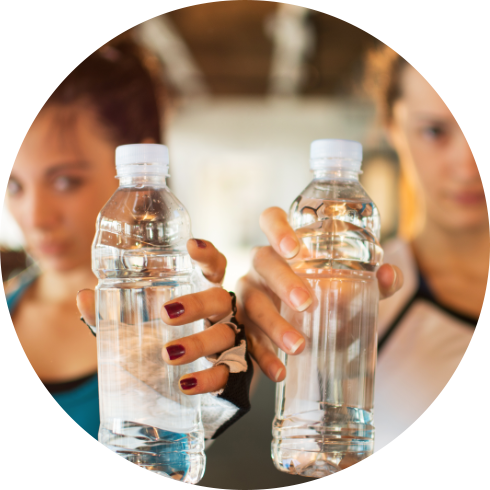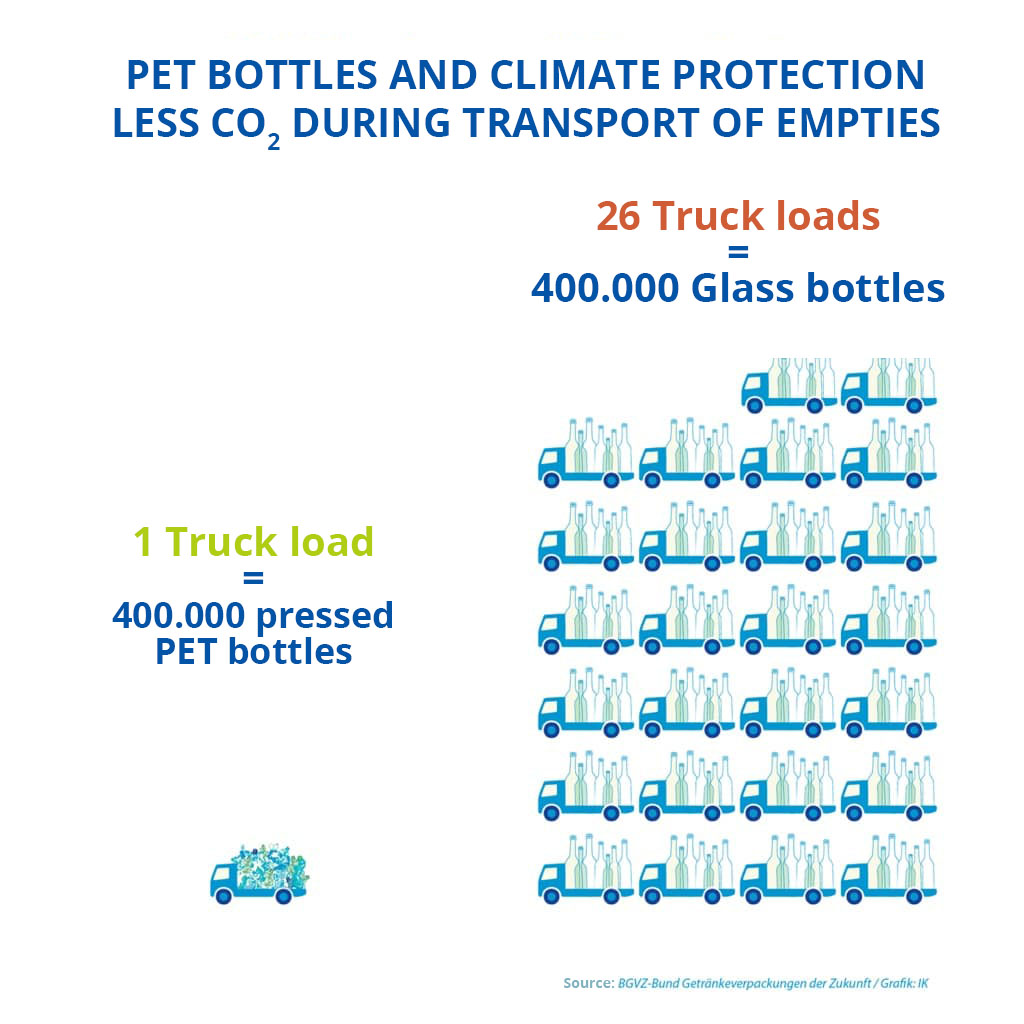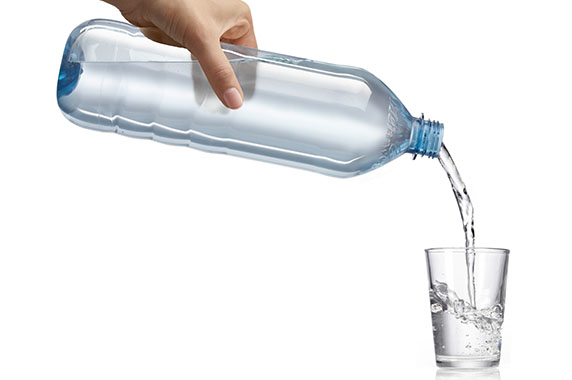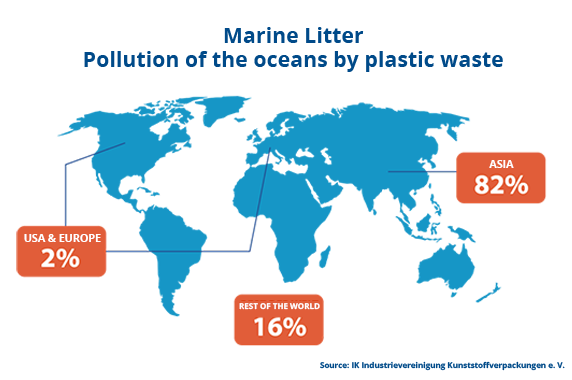PET bottles (both disposable or reusable) have an unjustifiably bad reputation as far as their ecological balance is concerned. For example, there is often a lack of facts about the effects of alleged plasticisers in PET. In many cases, PET bottles even have a significantly better eco-balance than glass bottles, for example.

Disposable PET bottles have become increasingly environmentally friendly in recent years
Using plastic products in an environmentally friendly and prudent manner – this is best achieved with closed-loop recycling. The recycling of PET beverage bottles in particular is a positive example.
PET is successfully recycled in Germany. The success of PET recycling in Germany is demonstrated by the study “Aufkommen und Verwertung von PET-Getränkeflaschen in Deutschland 2019” (Emergence and recycling of PET beverage bottles in Germany 2019) conducted by market researcher Gesellschaft für Verpackungsmarktforschung (GVM). The study found that 94 per cent of all PET beverage bottles are recycled. The recovery rate is also almost 100 per cent. There are also signs that recycled material is being used to an increasing extent. A PET bottle today consists on average of 30 percent recyclate.
PET bottles have a good ecological footprint because they are lightweight, which means that less CO2 is expended during transport. The returnable PET bottle thus achieves almost the same level as the returnable glass bottle. PET returnable bottles even overtake returnable glass bottles thanks to their lower weight. In addition, they can be refilled up to 20 times.


Bisphenol A: PET beverage bottles contain no hormonally active substances
The myth that PET beverage bottles contain hormonally active substances such as bisphenol A (BPA) persists. Scientific research and studies have proven the opposite: PET beverage bottles do not contain any chemical compounds that could negatively influence the human hormone balance. Bisphenol A is also not used in the production of PET beverage containers.1
Bisphenol A is a chemical compound used in the production of the plastic polycarbonate and epoxy resins.2 It is found in beverage and food cans, CDs and DVDs, but also in plastic items such as coated packaging, plastic tableware and toys.3
1https://www.bfr.bund.de/de/fragen_und_antworten_zu_pet_flaschen-10007.html
3https://utopia.de/ratgeber/bisphenol-a-bpa-chemikalie-hormonelle-wirkung/
Plastics are the focus of criticism. The PET beverage bottle in particular is seen as a symbol for environmental problems such as the pollution of the world’s oceans or illegal waste disposal.
And there is no question: our waste must not end up in the environment. However, if disposed of responsibly or, even better, recycled, the contribution of plastics to climate protection is enormous. Unlike the very visible problem of marine litter, however, CO2 reduction through plastic packaging is mostly invisible and the perception of these packaging solutions is therefore one-sidedly negative – and wrongly so. This is borne out by many studies and scientific research. Our fact check dispels myths and half-truths about plastics.

Avoiding plastic waste in the sea
Internationally, a large number of initiatives are working hard to try to tackle on the problem of litter in our oceans. Politicians, industry and NGOs are working together to find solutions to prevent pollution, especially in the marine litter hotspots of Asia and Africa.
187 countries have agreed to tighten export regulations in the Basel Conventions in order to reduce the export of packaging waste to countries without efficient recycling systems and to strengthen recycling. Water and marine conservation have a much longer tradition in Europe. Europe’s share of global marine pollution is therefore relatively small.
Nevertheless, the global goal also applies to Europe: to establish a functioning circular economy where plastics are used and recycled sustainably in order to minimise environmental pollution.
